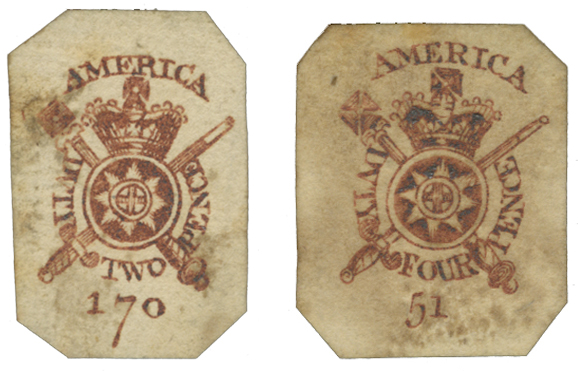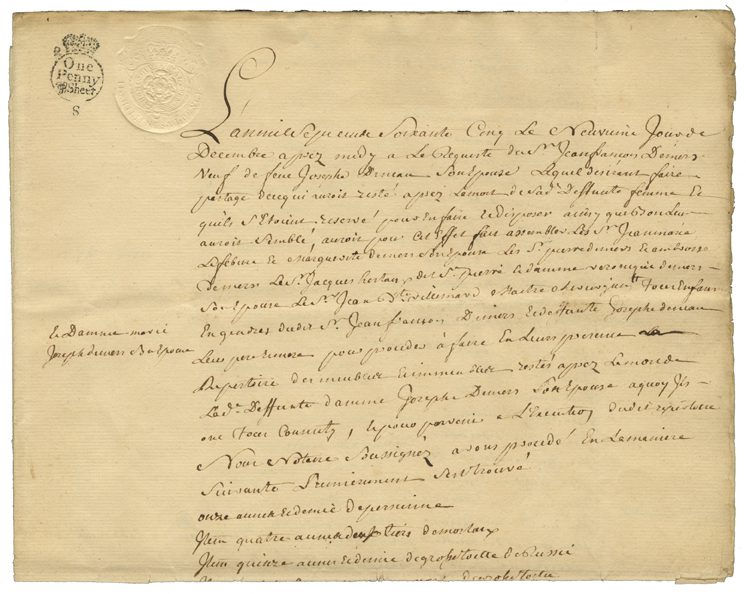Stamp Act Congress Meets to Protest Unfair Taxation

Stamp Act Congress Meets to Protest Unfair Taxation
In response to Parliament’s Stamp Act of 1765, American colonists assembled in New York City on October 7 to organize a unified protest.
Since the end of the French and Indian War, the British Parliament had been looking for new ways to increase its revenues from overseas colonies. Among the steps they took was the passage of the Stamp Act of 1765, which placed direct taxation on the colonies for the first time. Under this act, all types of printed material required a stamp showing that a tax had been paid. Items requiring these stamps included newspapers, books, court documents, land deeds, almanacs, and playing cards.

Many of the colonists were outraged. That June, the Massachusetts Assembly sent a letter to the various colonies (including portions of present-day Canada, which was considered part of the American colony) to arrange a meeting to discuss the situation. Nine colonies (Massachusetts, Rhode Island, Connecticut, New York, New Jersey, Pennsylvania, Delaware, Maryland, and South Carolina) ultimately selected delegates to attend the congress.
Delegates traveled to New York City in late September and held their first meeting on October 7 at Federal Hall. The sessions were held behind closed doors and the journal of the congress deliberately kept the details to a minimum. But it is known that they extensively debated the Stamp Act and the differences between direct internal taxation and external taxation from Britain. In the end, they largely agreed that taxation should remain within the colonies.

The delegates worked together to produce a statement of rights to send to the king and Parliament. Known as the Declaration of Rights and Grievances, it included 14 points. These included a proclamation of loyalty to the crown, the belief that the colonists should be able to choose representatives to levy taxes, that all colonists had the right to trial by jury, and the economic consequences of the act (that the colonists would reduce trade with Britain).
Many in England refused to recognize the document and considered it inappropriate and unconstitutional. However, the threat of lost trade led some to rally for the repeal of the act. Though the Stamp Act was repealed, Parliament passed the Declaratory Act, which claimed its authority to legislate the colonies no matter what.
The Stamp Act Congress is often considered one of the first organized political actions of the American Revolution. Though the colonists weren’t interested in independence from Britain at the time, further British Acts in the next decade would incite revolution.
Please note, the stamps and document above are not available for sale and are for illustration only. Click them to view larger.
Very interested to know which part of present day Canada was thought to be part of the then US colony?
Yes, I am curious about this too.
A guess here – The northern boundary of Maine was in dispute with Canada. During colonial times, Maine was actually part of the colony of Massachusetts.
The stamp act was passed while the colony’s were still part of the British empire as was a large portion of present day Canada. Some of Canada was also French as was some of the US.
Nice article, but I did not like it because you did not use any example of stamps. I like the articles because you use stamps to help explain. I’m sure you could of used some stamps that showed the British taxing us. I have saved every one you have done. I plan to add the stamps to the pages and give them to my grandchildren. Thank you for doing this for us.
Greg
Why don’t they teach these truths in our public schools?
What ARE you talking about? This things are routinely taught in our public schools.
I did teach these things.
I agree that this should have been tied to a US stamp. It is interesting history and is lost to present generations, probably viewed as PC incorrect for whatever reason.
Thanks for sharing this. I wonder if there is a record of who the delegates were, who were the leaders, and what participation, if any, did they have going forward with the independence movement?
Thanks for these “Day in History” notes. The notes will definitely add to and help generate more interest when teaching / presenting philatelic history and stamp collecting to potential new stamp collectors.
I really like the daily history class!
Keep it coming!
Great to see examples of stamps that are not typical postage stamps. Keep up the good work!
Fascinating! In addition to your History lesson, I enjoy reading the various comments and quieries from the stamp world audience. I have mentioned this before. At the end of the first year, why don’t you publish a book/album of each days offering with a spot for placing the stamp in question? It might be good for business Mr. Sundman. Just a thought.
Just a quick P.S. to my previous remark. The cover could be embossed :
THIS DAY IN HISTORY
VOLUME ONE
Nice article
What would the tax stamp be worth are Any in the U.S.?
So many of today’s history books being presented to our young people have been so laundered that they are not being taught much of our real history. It’s refreshing to read your daily history lessons. Keep up the good work.
I find historical stamps very interesting. I have three stamps especially made but the article interested me to get an ink stamp pad to personalize my correspodence in every day life again.
It adds distinction to the personal or business letter in today’s very impersonal world of robots and machines.
Frankly, having never seen one before, I was happy to see the “Tax Stamps” instead of a US stamp. The fact that they never paid the tax and thus, making them very rare is fascinating. I too would like to know what they would sell for if one ever came up for auction.
I enjoyed the examples of the tax stamps, instead of US postage stamps, for a change. I’d never seen these before, and learned and enjoyed something new.
This year is the 250th anniversary of the Stamp Act, and it would have made a nice subject for a commemorative stamp or set of stamps. Had I been aware of it coming up, I would have requested CSAC to recommend it to the Postal Service. They need 2-3 years advance notice, I have been told. It is certainly too late now. Too bad!
Great article. It brings back memories of elementary school when we were taught about the colonies.
I want to order my book now!!
A very good ideal R.A. Reid made
But add a # to the inside ( # 2 of 1000) in my.